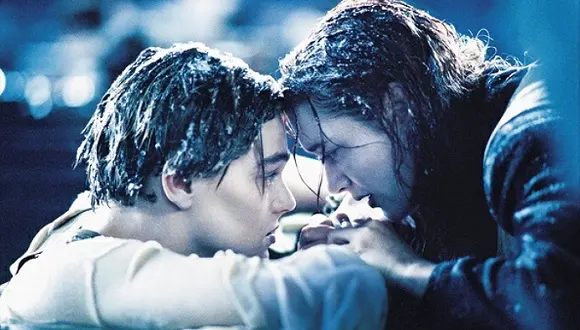RMS Titanic was a British passenger liner that sank in the North Atlantic Ocean in the early hours of 15 April 1912, after colliding with an iceberg during her maiden voyage from Southampton to New York City. There were an estimated 2,224 passengers and crew aboard, and more than 1,500 died, making it one of the deadliest commercial peacetime maritime disasters in modern history.
RMS Titanic was the largest ship afloat at the time she entered service and was the second of three Olympic-class ocean liners operated by the White Star Line. She was built by the Harland and Wolff shipyard in Belfast. Thomas Andrews, her architect, died in the disaster.
Titanic was under the command of Capt. Edward Smith, who also went down with the ship. The ocean liner carried some of the wealthiest people in the world, as well as hundreds of emigrants from Great Britain and Ireland, Scandinavia and elsewhere throughout Europe who were seeking a new life in the United States.
The first-class accommodation was designed to be the pinnacle of comfort and luxury, with an on-board gymnasium, swimming pool, libraries, high-class restaurants and opulent cabins. A high-powered radiotelegraph transmitter was available for sending passenger "marconigrams" and for the ship's operational use.
Although Titanic had advanced safety features such as watertight compartments and remotely activated watertight doors, it only carried enough lifeboats for 1,178 people—about half the number on board, and one third of her total capacity—due to outdated maritime safety regulations. The ship carried 16 lifeboat davits which could lower three lifeboats each, for a total of 48 boats.
However, Titanic carried only a total of 20 lifeboats, four of which were collapsible and proved hard to launch during the sinking.
After leaving Southampton on 10 April 1912, Titanic called at Cherbourg in France and Queenstown (now Cobh) in Ireland before heading west to New York. On 14 April, four days into the crossing and about 375 miles (600 km) south of Newfoundland, she hit an iceberg at 11:40 p.m. ship's time.
The collision caused the hull plates to buckle inwards along her starboard (right) side and opened five of her sixteen watertight compartments to the sea; she could only survive four flooding. Meanwhile, passengers and some crew members were evacuated in lifeboats, many of which were launched only partially loaded.
A disproportionate number of men were left aboard because of a "women and children first" protocol for loading lifeboats.[8] At 2:20 a.m., she broke apart and foundered with well over one thousand people still aboard. Just under two hours after Titanic sank, the Cunard liner RMS Carpathia arrived and brought aboard an estimated 705 survivors.
The disaster was met with worldwide shock and outrage at the huge loss of life and the regulatory and operational failures that led to it. Public inquiries in Britain and the United States led to major improvements in maritime safety. One of their most important legacies was the establishment in 1914 of the International Convention for the Safety of Life at Sea (SOLAS), which still governs maritime safety today.
Additionally, several new wireless regulations were passed around the world in an effort to learn from the many missteps in wireless communications—which could have saved many more passengers.
The wreck of Titanic was discovered in 1985 (more than 70 years after the disaster), and remains on the seabed. The ship was split in two and is gradually disintegrating at a depth of 12,415 feet (3,784 m). Thousands of artefacts have been recovered and displayed at museums around the world.
Titanic has become one of the most famous ships in history; her memory is kept alive by numerous works of popular culture, including books, folk songs, films, exhibits, and memorials.
Titanic is the second largest ocean liner wreck in the world, only beaten by her sister HMHS Britannic, the largest ever sunk, although she holds the record as the largest sunk while actually in service as a liner due to Britannic being used as a hospital ship at the time of her sinking. The final survivor of the sinking, Millvina Dean, aged two months at the time, died in 2009 at the age of 97.
翻译:
1912年4月15日凌晨,一艘英国客轮“泰坦尼克号”在从南安普敦到纽约的首次航行中与冰山相撞,随后在北大西洋沉没。据估计,船上有2224名乘客和机组,超过1500人死亡,使其成为现代史上最致命的商业和平时期的海难之一。英国皇家邮轮泰坦尼克号是她服役时最大的漂浮船,也是白星航线运营的三艘奥运级远洋客轮中的第二艘。她是由哈兰德和沃尔夫造船厂在贝尔法斯特建造的。她的建筑师托马斯·安德鲁斯死于这场灾难。
泰坦尼克号在Edward Smith船长的指挥下,也与船一起下沉。这艘远洋班轮载着世界上最富有的一些人,以及来自大不列颠和爱尔兰、斯堪的纳维亚半岛和欧洲其他地方的数百名移民,他们在美国寻求新生活。一流的住宿是舒适和奢华的顶峰,有车载健身房、游泳池、图书馆、高级餐厅和豪华客舱。
一台大功率无线电报发射机可用于发送乘客“马康格雷姆”和船只的运营使用。尽管泰坦尼克号有先进的安全设施,如水密舱和遥控水密门,但它只载有1178人的救生艇。E-大约一半的船上,和她的总容量的三分之一由于过时的海上安全条例。这艘船搭载了16艘救生艇艇架,每艘救生艇可以减少三艘救生艇,共有48艘船。然而,泰坦尼克号总共只搭载了20艘救生艇,其中4艘在沉船期间是可折叠的,并且很难发射。
1912年4月10日,泰坦尼克号离开南安普敦后,先在法国的切尔堡和爱尔兰的昆斯敦(现为科布)停靠,然后向西驶向纽约。4月14日,在渡口四天后,在纽芬兰以南约375英里(600公里)处,她在船的时间晚上11:40撞上了冰山。这次碰撞导致船体板块沿着右舷向内弯曲,16个水密舱中的5个舱室通向大海,她只能经受4次洪水。
与此同时,乘客和一些机组人员在救生艇中撤离,其中许多只发射部分装载。由于“妇女儿童优先”的救生艇装载协议,有相当多的男人被留在船上。凌晨2:20,她崩溃了,船上还有1000多人。在泰坦尼克号沉没两个小时后,Cunar客机RMS Calpasina抵达并带来了大约705名幸存者。
这场灾难遭到全世界的震惊和愤怒,因为巨大的生命损失以及导致灾难的监管和操作失败。英国和美国的公众调查导致了海上安全的重大改善。他们最重要的遗产之一是1914年《国际海上人命安全公约》(SOLAS)的建立,该公约至今仍管理着海上安全。此外,世界各地还通过了几项新的无线法规,以努力从无线通信中的许多失误中吸取教训,这些失误本可以节省更多的乘客。
泰坦尼克号的沉船是在1985年(70年后)发现的,目前仍在海底。这艘船被分成两半,在12415英尺(3784米)深处逐渐崩解。数以千计的文物被回收并陈列在世界各地的博物馆里。《泰坦尼克号》已成为历史上最著名的船只之一,她的记忆被许多流行文化作品所保存,包括书籍、民歌、电影、展览和纪念品。
泰坦尼克号是世界上第二大沉船,仅次于她的妹妹HMHS Brinnic,有史以来最大的沉船,尽管她保持着最大沉船的记录,但实际上由于大不列颠号在沉船时被用作医院船只而作为班轮服务。沉没的最后一个幸存者,米莉维娜·迪恩,在两个月大的时候,2009岁去世,享年97岁。
扩展资料
根据泰坦尼克号真实事件改编的电影《泰坦尼克号》是美国二十世纪福斯电影公司、派拉蒙影业公司出品爱情片,由詹姆斯·卡梅隆执导,莱昂纳多·迪卡普里奥、凯特·温斯莱特领衔主演。
影片以1912年泰坦尼克号邮轮在其处女启航时触礁冰山而沉没的事件为背景,讲述了处于不同阶层的两个人穷画家杰克和贵族女露丝抛弃世俗的偏见坠入爱河,最终杰克把生命的机会让给了露丝的感人故事。
该片于1997年12月19日在美国上映,1998年4月3日在中国在内地上映,2012年4月10日以3D版在中国内地重映


























